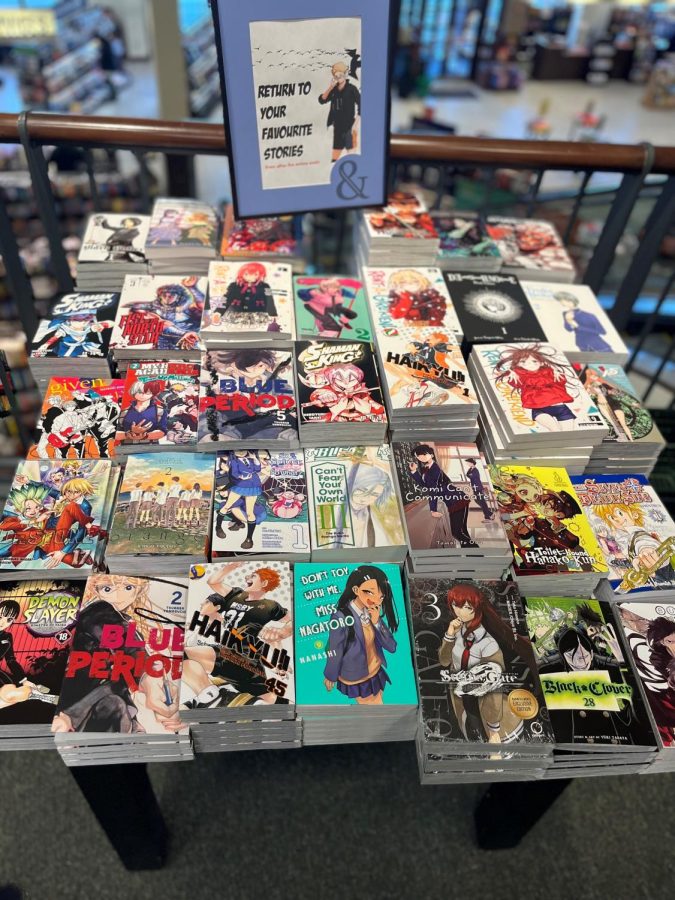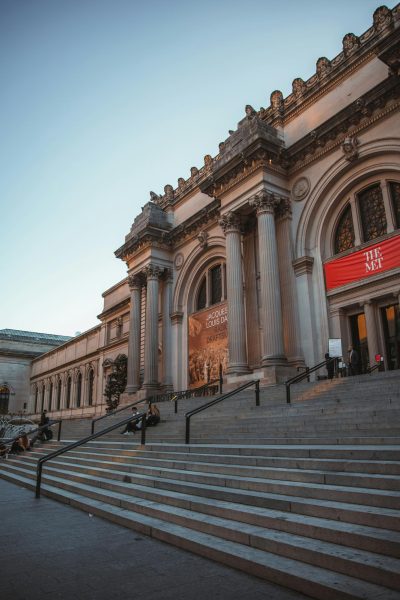Manga Takes the World by Storm
Thanks to globalization, Japanese culture has taken the world by storm. As a result, popular sources of entertainment such as manga and anime have seen their way outside Japan. Manga refers to Japanese graphic novels and the source material for anime, the animated version of the manga. Manga was initially introduced to the United States in the ‘60s and ‘70s with the release of “Astro Boy”, which didn’t gain much traction. It wasn’t until the ‘90s when manga gained popularity in America due to anime titles such as Sailor Moon, Pokémon, Dragon Ball Z, and many more.
Televising anime worldwide opened the door for manga sales. This continues to hold true decades later, but instead of television, popular streaming services such as Netflix, Hulu, and Crunchyroll have given anime and manga much exposure. Juliet Wrzesniewki, a sophomore, said, “I got into anime just from picking a random show on Netflix.”
During the COVID-19 outbreak, manga sales have seen their highest numbers. This is because more people were inside streaming and wanted to read Demon Slayer, written by Koyoharu Gotouge, was the most sold manga title in 2020, with over 82 million copies sold. This was 74 million more than the second highest-selling manga, Kingdom. The significant number of sales that Demon Slayer yielded has done wonders for the anime community in terms of exposure. Many fans enjoyed Demon Slayer and decided to branch out to more titles.
With this increase in manga sales, American comics are being out-shadowed. Many factors can explain why people prefer manga to American comics and programs. One of these prominent factors is art and animation. Andrew Director, a senior, said, “I got hooked on anime because of how it tells more mature stories using animation as a medium instead of live-action that I am used to.” People are avidly buying manga for the same reason that people buy books based on their favorite movies. Director said, “I decided to buy manga because of my love for its adaption and to discover any parts left out of it.” In addition, each manga title has its own distinct look. There are many different illustrators and publishers in the manga industry. Therefore, there is an even broader range to captivate audiences. Also, because manga tends to be cheap (around $10 per title), more people are willing to buy it.
Another factor that draws people towards anime is the music selection. While many shows will have background music, none do it like anime. Johnny Lu, a senior, said, “The music used adds more emotion. Many of the songs carry a deeper meaning that adds to the song, even if I don’t understand the words myself. That sort of music, that transcends the language barrier, is alluring.” The beginning and end of an anime will consist of emotional or inspirational music that will draw in the watcher. Lu said, “The songs carry within it the story of the show. They can make you sad, happy, or even bittersweet.” Thanks to the popularity of anime, Japanese music is finding itself on many American playlists. On Spotify, anime is listed as a genre that includes many different playlists from fan-favorite titles.
Manga has massive appeal in which there is one for everyone, compared to American comics that are usually geared towards superheroes. Manga provides much more diversity in the fictional world, tackling more issues than just being a hero. The popular manga and anime series, Eighty-Six, written by Asato Asato, takes on oppression, hate, and people who want to create change. The protagonist, Vladelina “Lena” Milizé, is a “handler” who remotely commands people to fight from the Eighty-Sixth district, who do not possess the same silver eyes and hair. These people are forced to fight against their will, and while most handlers neglect to care about the Eight-Six, Lena does everything in her power to make sure all of them survive, knowing that these are real people and not just dots on a screen. In addition to the various genres and themes that manga and anime offer, they are also geared towards specific age groups. The five labels are as follows:
- Shonen (targeted towards young boys)
- Shojo (targeted towards young girls)
- Seinen (targeted towards older boys)
- Josei (targeted towards older girls)
- Kodomomuke (translates to intended for children).
As we are constantly connected via social media, culture will spread. Anime and manga have made their way to the West and are not leaving anytime soon. Manga has outsold American comics and should be used as inspiration for a more diverse comic industry in the West.

I am a member of the Class of 2022. I am a part of the varsity badminton team. I love spending my time playing video games and going out with friends.
























